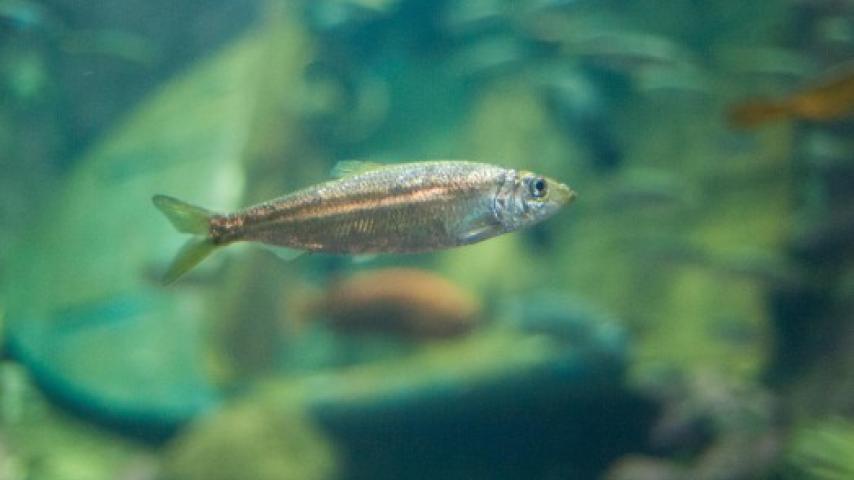Pacific Herring (Clupea pallasii)
Herrings range widely in the North Pacific Ocean and are among the most abundant fishes where they occur.

KINGDOM Animalia - PHYLUM Chordata - CLASS Osteichtyes - ORDER Clupeiformes - FAMILY Clupeidae
In the Puget Sound system, they move through our waters in prodigious schools of thousands and thousands of individuals. Most of the fish we see in these schools are in the range of 10-20 cm in length, but the largest may reach 33 cm or more.
Herrings are slender fish, blue-black above and silvery-white below, the perfect countershading to be almost invisible in the water column. However, they are clearly visible from docks as they move along the shoreline.
Herrings breed in our waters in early spring, and their spawning is one of the real spectacles of the marine environment. Huge schools move into shallow water to spawn, as they can lay their eggs only on substrates, not in the open water. The males release sperms in milky clouds that ensure fertilization of most of the eggs. The eggs are a bit over one millimeter in diameter, so they are plainly visible, and a single female can lay them in the tens of thousands. They are very sticky, so they adhere to eelgrass, kelp, and other seaweeds as well as inshore rocks, pilings and any other fixed surface.
Seaweeds that are loose in the water are deposited on shore by waves, with massive mortality of attached herring eggs. The mass spawnings also attract predators, and all the fish-eating birds in the region converge on the area. As well, sea ducks and gulls eat the eggs in great quantity. When herring were more abundant a few decades ago, their spawning events generated astonishing concentrations of seabirds in protected bays.
The eggs hatch in about 10 days into a 7.5-mm larva, with a yolk sac that quickly becomes absorbed. The young herrings eat primarily copepods and reach a length of 7–10 cm during the summer. They are much captured by jellyfish during that time. They then retreat to deeper water with the onset of autumn, not to be seen again until about three years later, when they are sexually mature at about 19 cm in length. They continue to grow slowly and breed again in subsequent years. The adults feed on small invertebrates of all kinds and on more and more small fishes as they get larger.
Herring have long constituted an important fishery in Pacific Northwest waters, used as bait and canned and pickled fish and then rendered into oil and meal. The fishery crashed in the mid 1960s, apparently by overfishing as well as a few poor spawning years. Nowadays this fishery targets primarily the eggs. Collected together with their kelp substrate, they are salted and sold as kazunoko-kombu, a great delicacy in Japan. As herring numbers have declined substantially in recent decades, the fishery Is strictly regulated, with very brief access to the fish.


